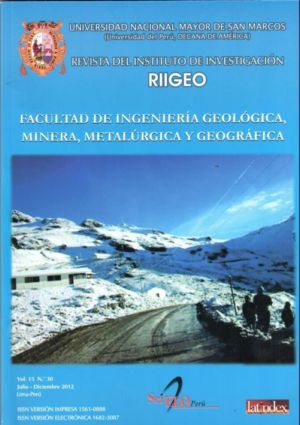Continuous mining, its application in a metallic mining operation
DOI:
https://doi.org/10.15381/iigeo.v15i30.3448Keywords:
continuous excavator, I slashed hard rock, pollution, profitabilityAbstract
The use of roadheader (RH ) equipment for the underground mining of zinc ores in the San Vicente reservoir is analyzed. The characteristics of the ore bodies of the deposit is described in terms of technical and economic terms for removal by continuous mining system . Compared with the method of room and pillar mining with filling up currently applied , through the present value (PV ) of the cost of the two mining systems determining the continuous mining method has the lowest present value cost . The alternative of continuous mining equipment with RH without the use of explosives to break the rock, compared to the current system of mined with explosives, has other advantages , such as reducing the rocky Massif instability caused by vibrations , surface generation uniform in the excavations , reducing environmental pollution by noise, dust and gases that produce the shots and diesel equipment inside the mine . The risk to personnel handling explosives and generated significant savings in maintenance costs and operation is avoided.
Downloads
Published
Issue
Section
License
Copyright (c) 2012 Oswaldo Ortiz S., Godelia Canchari S.

This work is licensed under a Creative Commons Attribution-NonCommercial-ShareAlike 4.0 International License.
AUTHORS RETAIN THEIR RIGHTS:
a. Authors retain their trade mark rights and patent, and also on any process or procedure described in the article.
b. Authors retain their right to share, copy, distribute, perform and publicly communicate their article (eg, to place their article in an institutional repository or publish it in a book), with an acknowledgment of its initial publication in the Rev. Inst. investig. Fac. minas metal cienc. geogr.
c. Authors retain theirs right to make a subsequent publication of their work, to use the article or any part thereof (eg a compilation of his papers, lecture notes, thesis, or a book), always indicating the source of publication (the originator of the work, journal, volume, number and date).






